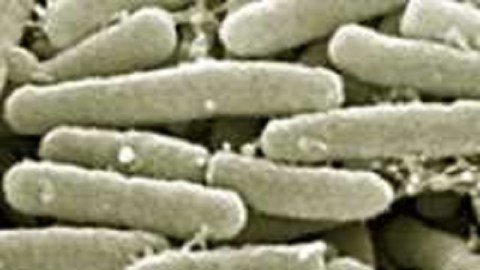The Bug That Saved the Renaissance

One of the odder cultural moments of the late 1970s that still sticks with me is the cinematic tour de force titled The Fish That Saved Pittsburgh, the improbably story of a basketball team enjoying a renaissance after an astrologer gathers together a bunch of players born under the sign of Pisces (the “fish”), including Moses Guthrie (played by “Dr. J” Julius Erving in his finest film performance). Just as improbable as that “fish” saving a city is the idea of a bug (the bacteria Pseudomonas stutzeri, shown above) saving the Renaissance, or more specifically, the artwork of that era. If the use of bacteria to strip away the damaging grime proves to be a viable solution to previously hopeless conservation projects, saving the treasures of the past might become as easy as a slam dunk.
As Mike Olson writes in his article in the November issue of Wired, “The frescoes in the Church of Santos Juanes in Valencia, Spain, have been damaged by fire (the Spanish Civil War), glue (botched restoration attempts in the ’60s), and salt blooms (a side effect of pigeon nests). But the 17th-century masterpieces aren’t lost yet.” Biologists working with art conservationists took Pseudomonas stutzeri and grew it in a culture filled with glue and salt, essentially teaching the bug to develop a taste for what ails the frescoes needing help. Specialists brush the bacteria onto the damaged areas, cover it with a special gel that adds humidity to the mix when heated, and rinse the mixture away—all without damaging the layers of paint beneath. Before anyone starts to worry about the bug going all Andromeda Strainand turning on us, Pseudomonas stutzeri is a harmless, naturally occurring, soil-based bug that dies in the cleaning process. “For the Pseudomonas,” Olson adds, “every masterpiece is the Last Supper.”
You can see amazing before and after pictures of similarly treated frescoes in Pisa, Italy, by Renaissance artist Spinello Aretinohere (scroll down). Bacteria has long been the enemy of art conservationists as it ate away at ancient materials, but an even greater enemy of today’s restorers are the restorers of the past. Working with the best intentions but less than the best techniques, past conservationists employed techniques that today would be considered too permanent in all the wrong ways. Glues, varnishes, and other surface treatments applied in the name of preservation in the past now act as barriers between today’s viewers and the art itself. Many art exhibitions in the past few years have showcased newly restored works, essentially showing off the art itself as well as the art conservation techniques of today. Growing up in Philadelphia, I thought I knew Thomas Eakins’ The Gross Clinic. When I saw the exhibition An Eakins Masterpiece Restored: Seeing The Gross Clinic Anew at the Philadelphia Museum of Art in 2010, my eyes were opened to the real masterpiece for the first time as well as the artistry of art conservation itself.
Olson ends his piece announcing that the researchers are looking for “what other surfaces can be scrubbed by these hungry little technicians” perhaps even “offer[ing] their services to private clients, too—bacteria car wash, anyone?” A clean car is nice, of course, but harnessing the power of nature to restore the beauty of our cultural heritage is truly a thing of beauty.





